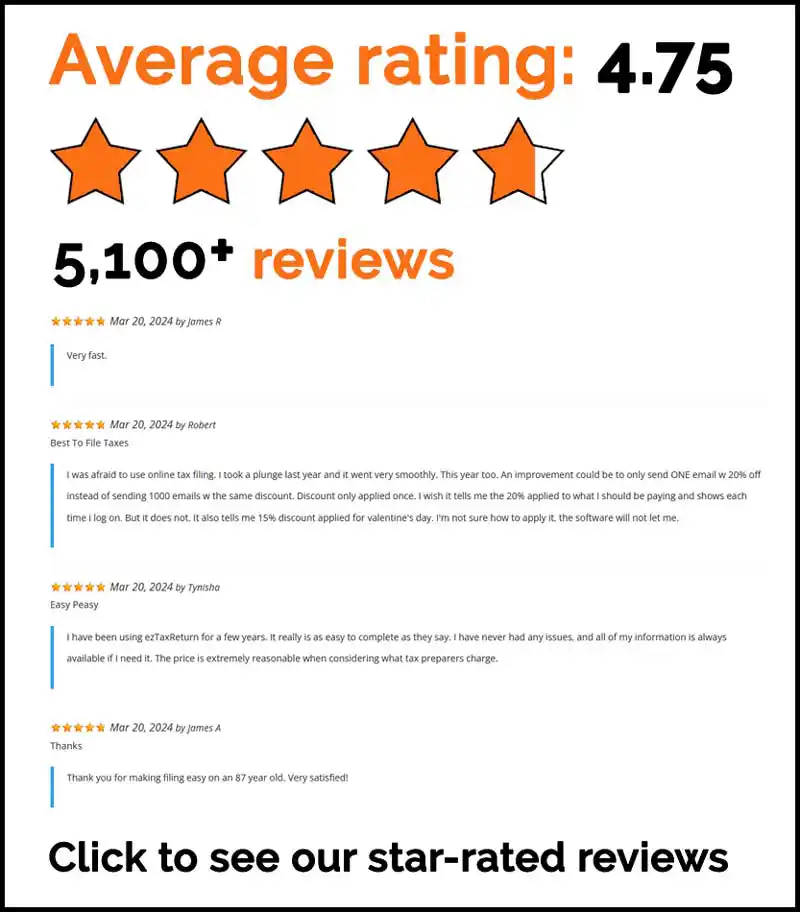The information in this article is up to date for tax year 2024 (returns filed in 2025).
When it comes to filing your taxes, one of the most important decisions you’ll face is whether to go with the standard deduction or itemized deductions. Choosing the right deduction method could save you hundreds, if not thousands, of dollars. But how do you know which option is the best for you? Understanding the difference between standard and itemized deductions is the key to making sure you’re saving as much as possible. In this article, we’ll discuss what each one means, how they work, and when you should choose one over the other.
What is the standard deduction?
The standard deduction is a fixed amount that reduces your taxable income. It’s a simple way to lower your tax bill without having to worry about tracking all your expenses. The amount you can deduct depends on your filing status, age, and whether you’re blind.
Standard deduction amounts: A quick guide
Here’s how the standard deduction for tax year 2024:
| Filing Status | Standard Deduction Amount |
| Single | $14,600 |
| Married Filing Jointly | $29,200 |
| Head of Household | $21,900 |
| Married Filing Separately | $14,600 |
Who benefits most from the standard deduction?
The standard deduction works best for those who don’t have a lot of deductible expenses to claim. If you don’t have huge medical bills, mortgage interest, or other deductible costs, the standard deduction is usually the easiest option. Plus, it’s quick and simple—no need for complex record-keeping or receipts.
What are itemized deductions?
If your expenses add up, you might be better off with itemized deductions. Unlike the standard deduction, this option allows you to deduct specific expenses—like mortgage interest, medical costs, and charitable donations—if they exceed the standard deduction amount. However, itemized deductions require more effort, as you’ll need to keep detailed records and receipts.
Common itemized deductions:
Here are a few of the most common itemized deductions:
- Medical expenses: You can deduct medical expenses that exceed 7.5% of your Adjusted Gross Income (AGI).
- Charitable contributions: Donations to qualified organizations can lower your taxable income.
- State and local taxes (SALT): Up to $10,000 of state and local taxes can be deducted.
- Mortgage interest: Interest paid on your mortgage is usually deductible.
- Home equity loan interest: If the loan was used for home improvements, it could also be deductible.
The itemization process: What you need to know
To itemize deductions, you’ll need proof of all your eligible expenses. This means keeping track of receipts, invoices, and bank statements. If you don’t like paperwork, itemizing might not be for you—but if your expenses are high enough, the effort could pay off.
Comparing standard vs. itemized: A side-by-side analysis
To help you see the difference between standard and itemized deductions, here’s a quick comparison:
| Feature | Standard Deduction | Itemized Deductions |
| Complexity | Simple | Requires detailed record-keeping |
| Deduction Amount | Fixed amount | Variable, based on expenses |
| Filing Process | Easy | More time-consuming |
A real-world example: Weighing the options
Let’s consider two taxpayers:
- Taxpayer A chooses the standard deduction of $14,600.
- Taxpayer B itemizes their deductions, totaling $16,000.
In this case, Taxpayer B saves more because their itemized deductions exceed the standard deduction amount. In fact, around 10% of taxpayers choose to itemize because they have enough qualifying expenses to make it worthwhile.
Factors affecting your choice
Several factors can affect whether you should choose the standard deduction or itemized deductions. Here are a few things to consider:
- High medical costs: If you have significant medical expenses, itemizing might make more sense.
- Charitable giving: Regular donations can push your deductions higher if you choose to itemize.
- Mortgage payments: If you pay a lot in mortgage interest, itemizing could give you a bigger deduction.
Maximizing your tax deductions: Practical tips
Now that you know the difference between standard and itemized deductions, here are some tips to help you maximize your savings:
Record keeping tips:
- Keep all receipts and invoices related to your deductions.
- Organize documents by category (medical, charitable, mortgage, etc.).
- Use digital tools to track your expenses and deductions.
Tax software and professional help:
Using tax software can make comparing standard vs. itemized deductions a breeze. With tax preparation software like ezTaxReturn, you don’t have to worry about calculating the best deduction on your own—we automatically compare both options for you, ensuring you choose the one that gives you the biggest tax break! For more complicated situations, it might be worth consulting a tax professional to ensure you’re maximizing your tax savings.
Making the right choice for maximum savings
Choosing between standard and itemized deductions can feel complicated, but once you understand the basics, you’ll be able to make the best decision for your situation. Whether you opt for the simplicity of the standard deduction or the potential for greater savings with itemized deductions, making an informed choice could lead to significant tax savings.
Ready to make the most of your tax deductions? Get started today and let us help you maximize your savings this tax season.
The articles and content published on this blog are provided for informational purposes only. The information presented is not intended to be, and should not be taken as, legal, financial, or professional advice. Readers are advised to seek appropriate professional guidance and conduct their own due diligence before making any decisions based on the information provided.




